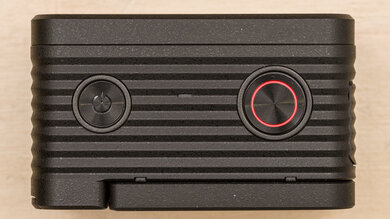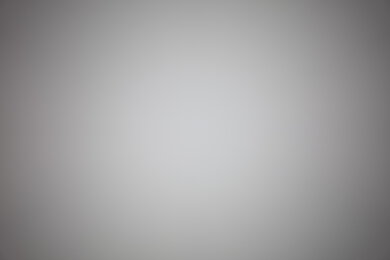The Sony RX0 II is the second iteration of Sony's unique ultracompact RX0 camera. While it looks and feels like an action camera, this little guy doesn't really fit into a neat box (metaphorically speaking, of course; literally, it'll fit into almost any box). It boasts a crushproof, shockproof, and waterproof design and has a small tilt-out screen that can flip up 180° for selfies and vlogs or down 90° for high-angle shots. It also has a micro HDMI port and microphone jack, allowing you to connect video peripherals, something you won't find on a typical action cam.
Our Verdict
The Sony DSC-RX0M2 is okay for travel photography. It's incredibly portable and durable, which is great for adventurous travelers going to remote locations who don't want to be weighed down by a bulky camera system. While its battery life is disappointing, you can continue to use it while charging via a portable power bank, which is handy when traveling. Image quality is limited by the camera's smaller sensor, so don't expect breathtaking travel photos, especially if you're shooting in dimly lit environments or at nighttime.
- Super portable.
- Shockproof, crushproof, and waterproof design.
- Disappointing battery life.
- No viewfinder or handgrip.
- Doesn't perform as well in low light
The Sony RX0 Mark II can take decent landscape photos, although it isn't intended for this use. It's mostly helpful for taking landscapes in remote locations or in the middle of adventuring, like mountain climbing or hiking. However, its dynamic range is quite limited due to its small sensor. Its tilting screen is also very small, making it harder to frame your shots.
The Sony DSC-RX0 II isn't intended for sports and wildlife photography. It can shoot at a very quick max burst rate to capture small moments of fast action. However, it doesn't have continuous autofocus, so it can't track and keep moving subjects in focus. The camera isn't meant for handheld use and only has a tiny screen to help you frame your shots. Its fixed wide-angle lens also isn't great for capturing farther-away subjects.
The Sony RX0 Mark II can shoot photos in RAW format, but we don't test this type of camera for RAW image quality.
The Sony RX0 II is good for vlogging. It's incredibly portable and lightweight, meaning you can vlog inconspicuously. You can flip its tilting screen up to face you for vlogs, although it's small. Its e-stabilization feature does a decent job of reducing camera shake. However, it doesn't have continuous autofocus, so it can't keep you in focus if you move out of the focal plane. It also doesn't have the best battery life, but thankfully it doesn't overheat, and there's no recording time limit.
- Super portable.
- Shockproof, crushproof, and waterproof design.
- Screen can flip up to face you.
- Disappointing battery life.
- No continuous AF.
The Sony DSC-RX0M2 is okay for studio video, although it's most suited to shooting B-roll from tricky angles or tight spots, thanks to its ultracompact size. Video quality is good in more controlled lighting but degrades in low light. The camera supports Log recording to preserve more dynamic range and tone in your videos. However, it can only capture 8-bit 4:2:0 color internally, giving you a bit less leeway to manipulate and grade your footage. While its screen is tiny, it does have a micro HDMI port, meaning you can connect an external monitor, and it has a mic jack to connect an auxiliary microphone for higher-quality audio recording.
- Super portable.
- Shockproof, crushproof, and waterproof design.
- Good video quality in brighter settings.
- Disappointing battery life.
- No continuous AF.
- Limited to 8-bit 4:2:0.
The Sony RX0 II is great for action video. Video quality is good in brighter lighting conditions, although it isn't as well-suited to shooting in low light. The camera also includes a high frame rate mode in 1080p, meaning you can capture audio-free super-slow-motion footage at up to 960 fps, as well as regular footage at up to 120 fps. However, its 4k frame rates are limited, maxing out at 30 fps. The camera's e-stabilization feature is also just decent, and you'll need to use a gimbal if you need super-smooth footage.
- Super portable.
- Shockproof, crushproof, and waterproof design.
- High frame rate mode in FHD.
- Good video quality in brighter settings.
- Limited high frame rate options in 4k.
- Disappointing battery life.
Changelog
- Updated Jan 29, 2024: Added text to the 'Raw Photo Performance' verdict box and updated existing verdict boxes for clarity and accuracy. Also removed outdated text from the RAW image quality test boxes.
- Updated Jan 29, 2024: Converted to Test Bench 0.12.1.
- Updated Sep 07, 2023: We've updated the 'Sensor Type' from 'Exmor RS CMOS' to 'Stacked BSI CMOS' to reflect the actual sensor technology rather than Sony's proprietary naming conventions.
- Updated Dec 21, 2022: Converted to Test Bench 0.12.
Check Price
Differences Between Sizes And Variants
The Sony DSC-RX0M2 only comes in one color variant: Black. You can see our unit's label here.
Let us know if you come across another variant, and we'll update the review.
Popular Camera Comparisons
The Sony DSC-RX0 ii is a pocketable camera unlike anything else on the market. It's not quite worth it as an action cam, with alternatives like the GoPro HERO10 Black offering better stabilization and more frame rate and resolution options at a more affordable price point. However, it shines as an ultracompact camera that you can pocket and use to capture shots or B-footage from odd angles and in tight spots that wouldn't be possible to achieve with a regular camera.
For more options, check out our recommendations for the best cameras for filmmaking and the best compact cameras.
If you're looking for an action camera, the GoPro HERO10 Black is a better choice than the Sony RX0 II. Though it isn't as ruggedly built and doesn't give you as much control over settings and focus, the GoPro gives you more frame rate and resolution options and better video stabilization.
The Sony ZV-E10 is better than the Sony RX0 II, though they're different cameras intended for different uses. While it isn't as rugged or compact as the RX0 II, the ZV-E10 is more versatile thanks to its interchangeable lens design. Its larger sensor also delivers better image and video quality, and it has a more effective autofocus system.
The GoPro HERO9 Black is a better value option for action video than the Sony RX0 II. While the Sony has a more rugged build quality and a unique tilting screen that helps with tricky angles, the GoPro has better video stabilization and offers more frame rate and resolution options.
Test Results

The Sony RX0 II is incredibly portable. It's similar in size to many action cameras and is even a bit smaller than the GoPro HERO10 Black in height and width. It's remarkably lightweight, making it easy to take anywhere, film in tight spots, or attach to an object or drone.
The Sony DSC-RX0 II feels amazingly well-built. It's made of robust materials, including a duralumin chassis, and it's advertised to be crushproof under weights up to 200 kgf/440 lbf/2000 N, shockproof from drops at heights up to 6.5 ft/2 m, and waterproof down to 33 ft/10 m. The screen and tilting mechanism feel solid, and the battery compartment is covered by a hinged door with a gasket for waterproofing. However, the plastic buttons feel cheap and flimsy compared to the rubberized button on the GoPro HERO10 Black. The SD card and inputs are covered by just a flap door, which feels like it could break more easily and would render the camera unusable underwater.
The Sony RX0 II is fairly comfortable to shoot with, though it isn't meant for handheld use. It's primarily meant for use with a tripod, monopod, or external grip. Sony sells the optional VCT-SGR1 Shooting Grip with integrated controls that you can buy at additional cost, but the camera is also compatible with third-party options and other accessories.
The buttons on the camera provide good physical feedback. The camera's compact size makes it easy to shoot with, though it can also feel cramped if you're shooting handheld.
The Sony RX0 II has a small, tilting screen. You can tilt it up 180° to record vlogs or take selfies, or tilt it down 90° for high-angle shots. Unfortunately, the screen doesn't have a very high resolution and doesn't get especially bright either, making it difficult to check the monitor when shooting in sunny conditions. The camera also uses Sony's full menu system, which is hard to read on the camera's tiny screen. The screen also lacks touch navigation.
The Sony RX0 II uses Sony's older menu system, which is just okay. It isn't very well-organized, with advanced settings spread across many pages and submenus that aren't always clearly labeled. You also have to use the camera's buttons to navigate the menu, which can be cumbersome, along with the small size of the screen, making it harder to read. On the upside, the menu does have a 'tile' view that makes it a little easier to see and navigate. Pressing the 'Fn' button also brings up a quick menu to access commonly used settings on the fly. You can also create a custom menu to access the settings you use most frequently.
Unfortunately, the Sony DSC-RX0 ii has poor battery performance. Its advertised battery life in photos is limited to 240 shots according to CIPA standards. While that number should be taken with a grain of salt when applied to real-world usage, it does give a good indication of how the camera performs compared to more conventional mirrorless or DSLR models. Naturally, because of the small size of the camera, it can't last as long as larger cameras. The bigger disappointment is its video battery life, which only lasts about 45 minutes when recording continuously using the highest quality settings. That's much shorter than many action cameras, lasting only about half as long as the GoPro HERO10 Black. On the upside, the battery doesn't overheat throughout its runtime, and you can keep using the camera while charging it via USB if you need to extend the battery life.
The Sony RX0 II has a very fast max burst rate to capture stills of fast-moving subjects. The camera only has an electronic shutter, so the burst rate remains the same whether or not you're shooting in silent mode. It has a decent-sized image buffer, but it does take a very long time to empty once full, which can slow you down or cause you to miss a critical moment.
The Sony RX0 II doesn't have any stabilization features in photo mode, but the camera's small size makes it easy to keep it steady for photos at relatively slow shutter speeds.
The Sony RX0 II stands apart from your typical action camera in that it supports Log recording with S-Log2, allowing you to capture flat footage that can be color graded in post to get a wider dynamic and tonal range.
The Sony RX0 II can record 4k video up to 30 fps, but it lacks any high-frame-rate or slow-motion recording options in this resolution.
The Sony RX0 II has great internal recording specs in 4k. It captures video at fairly high bit rates and has an unlimited recording time limit, so you can record as long as you need to within the limits of the camera's battery life. Unfortunately, it's limited to 8-bit 4:2:0 internal recording, which gives you less color information to work with when editing your footage.
Unfortunately, the Sony RX0 II only has single autofocus and can't track moving subjects continuously. It supports eye and face detection and does a good job of finding its target and accurately locking in focus, so it's good for videos with a static subject, like a talking head vlog where you don't move from your position in the frame. However, it's not well-suited for anything where you need to track a moving person or object continuously. You can adjust the focus while shooting by half-pressing the shutter button, but it won't automatically refocus if your subject moves.
Despite being advertised to have an 'anti-distortion' shutter with fast sensor readout speeds, the Sony DSC-RX0M2 still has some fairly heavy rolling shutter effect in 4k, especially when moving or panning the camera more quickly.
The Sony RX0 II can record 1080p footage at up to 120 fps without a crop, which is great for capturing smooth, fast action video or creating slow-motion clips. It also has a separate 'High Frame Rate' mode that can capture 1080p footage at 240 fps, 480 fps, or 960 fps, which you can slow down to 60p, 30p, or 24p for varying levels of slow motion. However, this mode doesn't record audio, and in our experience, it made the camera feel a bit slow and laggy.
Like 4k, FHD internal recording capability is great. There's no recording time limit, so you can record clips as long as you need within the camera's battery life.
Unfortunately, the Sony RX0 II only has single autofocus and can't track moving subjects continuously. It supports eye and face detection and does a good job of finding its target and accurately locking in focus, so it's good for videos with a static subject, like a talking head vlog where you don't move from your position in the frame. However, it's not well-suited for anything where you need to track a moving person or object continuously. You can adjust the focus while shooting by half-pressing the shutter button, but it won't automatically refocus if your subject moves.
1080p video quality is good in brighter lighting. Videos look reasonably sharp and detailed. However, the camera's smaller sensor introduces more noise at higher ISO settings or in low light. In dimly lit environments, there's pretty noticeable noise and grain and loss of detail and sharpness.
There's less rolling shutter effect in 1080p, which is good. Some distortion is still noticeable when moving the camera very quickly, but with moderate movements, it isn't too bad.
The Sony RX0 II has a solid amount of inputs and outputs for such a small camera. It has a micro HDMI port, allowing you to connect it to an external monitor or display. It even has a microphone input to connect an external mic for better audio recording.
















